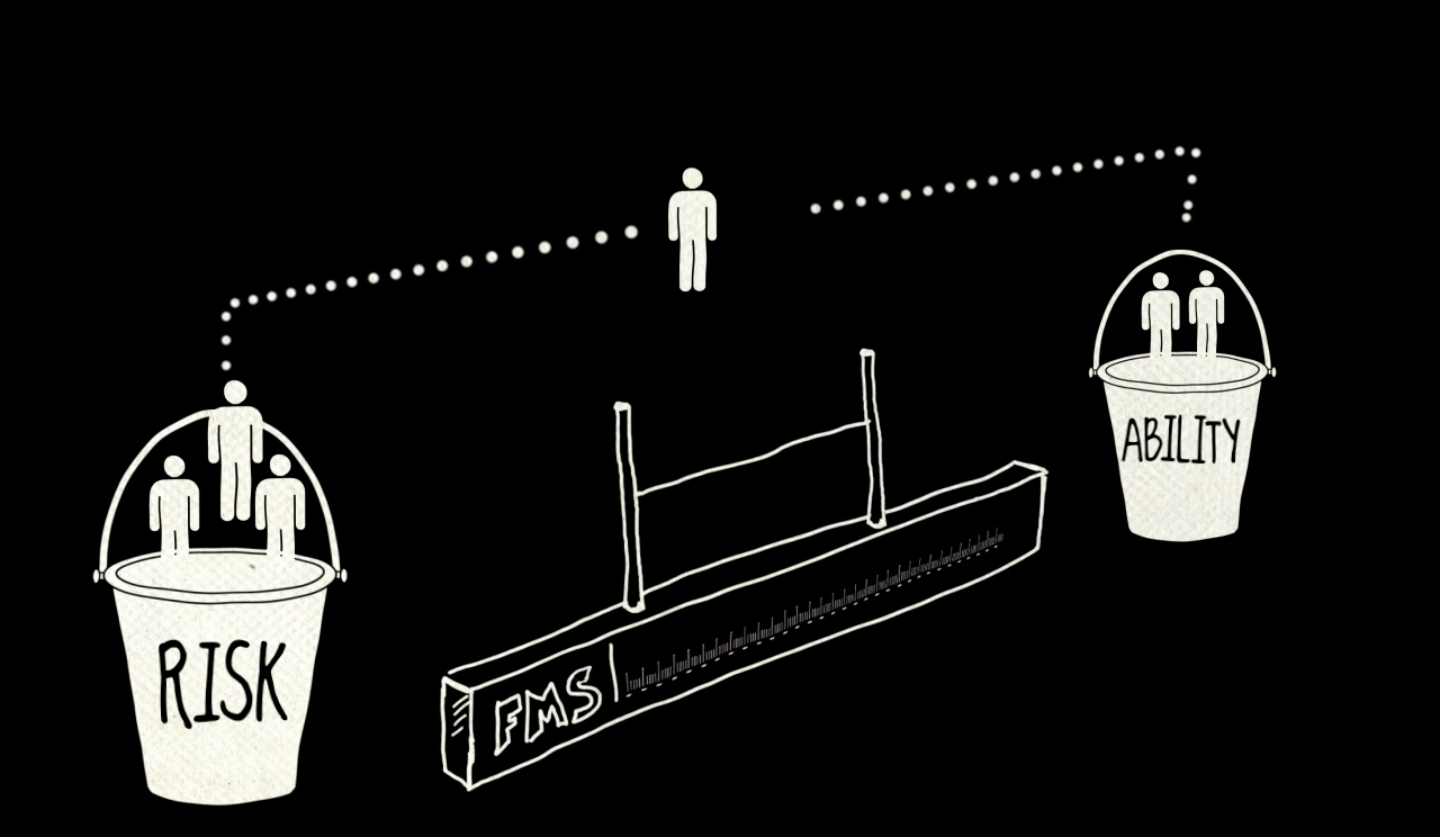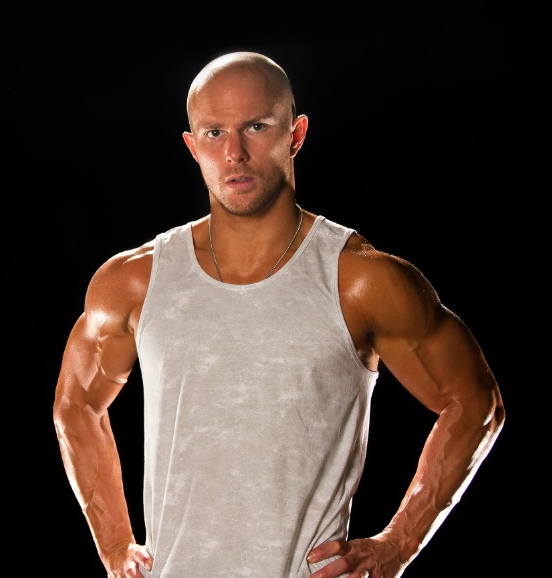Strength Defined
Posted by Gray Cook
Dr. Rusin: But going back to something that you said, Gray, you’ve got thousands of therapists, coaches and trainers that you’ve certified across the world. They use your tools. They’ve put metrics on movement. They provide a baseline for movement. In my opinion, FMS is the best seven minutes that I could possibly spend as a practitioner or as a coach to just learn some data points on some of these movement capabilities. At this point, is not screening clients in some sort of systemized manner before they start training considered negligent for the coach?
 Gray: Yeah, there’s a little responsibility there and obviously like you, myself, Kelly and those of us who are in healthcare, the Hippocratic Oath is always back behind that so I’m going to basically qualify that statement by saying ‘yes’. If you’re a real professional, the last thing you want is for somebody to get hurt on your watch if it could otherwise be prevented.
Gray: Yeah, there’s a little responsibility there and obviously like you, myself, Kelly and those of us who are in healthcare, the Hippocratic Oath is always back behind that so I’m going to basically qualify that statement by saying ‘yes’. If you’re a real professional, the last thing you want is for somebody to get hurt on your watch if it could otherwise be prevented.
Injuries are going to occur and random things happen but statistically when a team has a higher injury rate across a season in the NFL than the rest of the teams, it’s not the physical therapist or the athletic trainer or even the medical staff that gets challenged. It’s the strength coach that gets fired because the strength coach is charged with keeping healthy people healthy.
The medical staff is charged with getting unhealthy people healthy but when we have healthy people show up wanting to become more fit, the one thing we shouldn’t do is to take away that health to give them fitness. The health must support the fitness. If you’re a little bit hard on yourself (which I am), I know that my professional integrity does this so if you’ll let me just drop three principles, here’s how it works.
Principle #1: Our tag line at Functional Movement Systems is ‘First move well. Then move often’.
That is not my law. It is a law of nature. If you don’t move well enough to respond in an environment, you won’t have enough positive feedback loops or negative feedback loops to adapt so you must move well enough to respond appropriately and often enough to adapt accordingly.
That’s a law of nature. I didn’t do it but it’s our tag line at FMS so that we never forget why we’re here. We’re not an exercise company. We’re a testing company that tells you if your exercise is working to benefit you.
Principle #2: If we’re going to be professionally responsible, our first order of business is to protect – to protect you from your environment, you from me and you from you. Then correct; then develop.
Before I develop you, before I worry about helping you drop weight or get stronger, I must first protect you from all of those things that could hurt you and then correct those things that you do not have the awareness to correct yourself.

Principle #3: The third principle at FMS, and we’ve only got three principles, is to create a systematic approach that allows you to uphold the first two principles. That’s it.
One of my agendas in seeing maybe a movement screen platform be in CrossFit is the fact that I think there are so many different ways to correct movement that we haven’t even thought of. If we would take the creativity and motivation that CrossFit has and then give them a baseline to bounce their ideas off of, I think we would actually probably find even quicker and safer ways to make people move well and allow them to move more often.
Adding a feedback loop in CrossFit, I think, was immediately or sometimes looked at as, ‘Putting the FMS in CrossFit simply puts the brakes on CrossFit’. Not at all. Not at all. ‘Putting the FMS in CrossFit takes us from Rated R to PG13’. Not at all. Not at all.
It literally basically allows you to be badass and stay badass because you don’t have to have another CrossFit interview why it’s a great club. Everybody loves it. Why are we getting so many injuries?
Anytime that an NFL team has more injuries, they can either ignore it and say, ‘We just didn’t have a tough enough team’ or they can say, ‘Okay, something in our model – one of the filters – is broken. Let’s fix the filters’.
We can make people fit without compromising their health. We can basically do this. I literally think that a lot of innovative souls have already started doing that and we do see amazing things. I do think they get unbelievably quick results because they’re working with great functional techniques and a motivated client base. How can that not work out better if we add processing power?
The FMS is simply a personal computer for a GPS and the moves you probably shouldn’t load, the ones you could load and then doing something about it.
John: Yeah. One of the things that I think made CrossFit so dynamic in this industry was that it is truly the sport of fitness so it is both a sport and a means of fitness.

John: I’m going to leave you with one last question. If you were in charge of CrossFit for a day and you could make any change to the platform, what would you do?
Gray: Wow!
I would simply say, let’s take the workout of the day and just do movement screens on everybody and see if we learned anything from that. If we already knew everything the screen taught us, then there’s no reason to do it.
But, if we found things that we didn’t already know about a client who may have been under our guidance for six months, then it served its purpose. It served its role. It gave us another gauge to watch in the development of this whole person because there’s a bunch of other stuff we need to look at.
We need to be looking at body composition and all these things too but I would probably say, let’s make the workout of the day ‘Get screened’. Post your screen. Challenge yourself not to have ‘1’s’. Challenge yourself not to have ‘0’s’. Challenge yourself not to have asymmetries.

John: I have to sneak one more question in here. If you were approached tomorrow by the CrossFit headquarters to implement the FMS, could it be something that could be seamlessly done?
Gray: Heck, yeah. It was built to be seamless and it was built to be low-tech.
This screening model was not built for physical therapists or world-class strength coaches. This FMS was built for the physical education teacher with no budget and for the person with three weeks experience as a trainer wondering what the hell I’m going to do on Tuesday morning.
That’s who it was built for because if we don’t make a screen that damn near everybody can do…The complex problems that the screen may uncover, yeah, there are going to be a few people who deal with that better than the other but just because you might not have the corrective knowledge or the anatomical background to explain what’s going on in a screen doesn’t mean you should do it.
I mean, if the only people who knew CPR were doctors and nurses, we’d have a big problem on our hands. We want everybody to know the basics of CPR. Whether you know your cardiothoracic anatomy or not, we can teach you CPR.
I literally think that empowering the instructor on the floor to say, ‘You know what? Something is not going right. Let’s get you screened’ because here’s my play. If you don’t have a past medical problem and you don’t have any pain and you’ve got ‘1’s’ on the movement screen, I’ve got no logical play other than to challenge your environment.

But, if you have pain or a past medical problem and you’ve got a ‘0’ or a ‘1’ on the movement screen, I’ve got to challenge the organism. I have to say, ‘We’ve got to keep looking. Is there anything we can do to optimize your physical well-being, to get you more sleep, to get you an ankle brace until that is feeling better - whatever we’ve got to do’ but if you don’t have a past medical history, you don’t have a scoliosis, you don’t have something that explains why you’re getting a ‘1’, then I’ve got to challenge your environment. It’s either the environment that I’m training you in or the environment that you’re in when you’re not with me.
The first thing I’ve got to do as a professional is vet all of the exercises and basically do what Tim Ferriss does – the 80-20 rule. You know, much of the results you’re getting here in this box are due to about 20% of what we’re doing. I’ve got to figure out what that 20% is because if I can delete the rest, then I’ve got room to institute all of those things that will get you to the next level so I literally think we can use the screen as a very, very rudimentary tool to challenge the organism and the environment.
I just keep going back to those baselines and say, do you have the minimum amount of movement? Do you have the minimum amount of rest? Do you have the minimum amount of hydration? If you’ve met your minimums, other people have accomplished quite a few things with this platform. Let’s figure out why you can’t.
Dr. Rusin: Yeah, and the beauty of the FMS is the simplicity. Sometimes, the simplicity is the ultimate form of sophistication, and the efficiency that this could be taking off within the CrossFit realm would be a marriage made in heaven.
I really appreciate your time today, Gray. You’ve really dropped some great knowledge on us. Hopefully, this makes people think once or twice about going in and implementing this program, or any program for that matter. I really appreciate everything.

 |
This clip was originally recorded as part of an interview with Dr. John Rusin for T-Nation.com. For more on Dr. Rusin's programs and methodology visit DrJohnRusin.com. |
Posted by Gray Cook
Posted by Jon Torine
Hi! How long does it usually take to see improvement in a test when doing correcives? For how long should someone do the corrective exercises before changing them, moving on?
Being a former Cross-Fit owner--screening would change a lot and be incrediablly helpful while shedding a lot of light on why injury rates are so high.
Chantal,